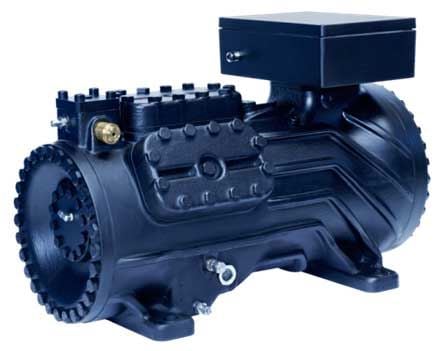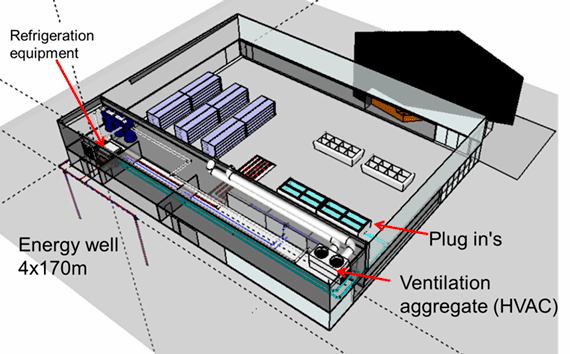
CREATIV - Energy effeiciency in the industry
Industrial energy saving initiatives
Contact person
The occurrence of global warming and the increasingly negative impacts of climate change are forcing governments across the globe to implement measures to generate a larger proportion of energy from renewable sources and increase the efficiency by which energy is used. On a global scale, the emission of greenhouse gases (GHG) by industry is one of the leading contributors to the increasing levels of carbon dioxide in the atmosphere; thus this is an area in which energy efficiencies can be realised.
A Norwegian project entitled ‘CREATIV: Competence project for Reduced Energy use through Advanced Technology InnoVations’, led by Dr Anne Karin Hemmingsen at SINTEF Energy in Norway, is aiming to present technology solutions that enable reductions to industrial energy consumption and GHG emissions. Formed in 2009 with four years of funding from the Norwegian Research Council and industrial partners, CREATIV is set to conclude its findings in 2013. The study involves the collaboration of a number of international research groups, key suppliers of energy efficiency equipment, and an industry consortium including the areas metallurgy, pulp and paper, food and fishery, and commercial refrigeration supermarkets.
Wide ranging success
CREATIV has made a number of technological developments to improve the energy efficiency of industry across sectors by targeting processes varying on a scale from the individual component to the whole system. Gasses are a fundamental component with wide-ranging industrial applications, including jet engines, pipeline gas transport, petroleum refineries, and refrigeration and air conditioning equipment.

The team has developed a highly efficient 100 kW CO2 compressor which reduces the overall energy efficiency by up to 12 per cent. In the specific application of refrigeration systems, this is increased to around 20 per cent. Refrigeration is a particularly energy intensive process as it involves the continual use of energy to move heat from one area to another against the gradient along which it would otherwise move. Thus the food industry, which is heavily reliant on refrigeration systems, has the potential to dramatically increase energy efficiency if the function of the cooling systems can be improved.
In addition to an efficient compressor, the project has also developed a compact, environmentally friendly and efficient 250 kW carbon dioxide refrigerated sea water (RSW) refrigeration system for fishing vessels and have evolved the ‘superchilling’ concept for food products, whereby 5-20 per cent of the water inside the product is frozen. Whilst reducing the need to conventionally freeze meat and fish, superchilling doubles the shelf-life of the product, whilst maintaining quality and reducing overall refrigeration energy by up to 13 per cent. Furthermore, by superchilling fresh fish during transportation, additional ice is not needed, generating space for more fish on the refrigeration trucks, which reduces the carbon footprint of the transportation by 20-25 per cent per kg of fish.
Surprisingly, in the context of these examples of impressive energy saving capabilities from the food industry, the biggest potential for utilisation of surplus heat comes from the paper pulp, refinery and metal industries, which use more than 70 per cent of the industrial energy in Norway. The team has demonstrated the technical possibility for one aluminium plant to increase production of electricity, using high-temperature surplus heat, from 0.2 to 1 TWh. Unfortunately, most of the surplus heat from the pulp and metal industries is too low in temperature for electricity production, so more research needs to be done to develop techniques for its production using heat of lower temperatures.
Creativ has developed concepts and technologies with big potential for energy reduction. For Norway to succeed with its goal to reduce the specific energy use by 20 per cent by 2020, the biggest focus must be the production of electricity from high temperature (>100 °C) surplus heat, the use of effective heat pump systems with low-to-medium (25-100 °C) heat surpluses and the design of industry clusters to maximise potential for energy sharing.
Energy efficient supermarkets of the future
With a particular focus on supermarkets and their characteristically high energy demands, CREATIV has made significant energy-saving developments within this industry by modifying refrigeration and air management system.
A recent study from the International Energy Agency showed that energy efficiency measures will have to account for more than half of all global strategies to avoid unacceptable global warming this century. Because of their function and infrastructure, supermarkets consume significantly more power than other commercial buildings of similar sizes; twice as much energy as a similarly sized office building. The electricity used for supermarket heat ventilation and air conditioning (HVAC), hot water and refrigeration utilities account for about 4 per cent of the country’s total energy consumption in the US and France, and 3 per cent in Sweden. Consequently, a single percentage reduction in their energy use would represent a significant energy saving on a national and global scale.
To best evaluate the effectiveness and success of measures to increase the energy efficiency of supermarkets, a systems approach must be used to simultaneously consider the potential of various parameters for energy savings. Within the broad scope of searching for energy efficiency improvements to industry, because of the significant energy consumption of supermarkets, this industrial sector has been a particular area of focus for the CREATIV project. This has not been an easy undertaking considering the wide range of factors that influence how much energy a particular supermarket consumes; variables such as ambient and indoor air temperature, relative humidity, store opening times and people presence.
Energy savings in supermarkets
Throughout the project, the team has been working to develop and demonstrate novel energy efficient supermarket concepts of the future; primarily by integrating ventilation, air conditioning and commercial refrigeration systems. One strategy is to implement a tool that enables the use of surplus heat from the refrigeration system for heating. The system stores energy both in tanks and in the ground, and has a ventilation system that is specially constructed for supermarkets. Furthermore the concept is fully flexible; it enables the free provision of air conditioning through the use of energy wells, and can easily be switched from a cooling to a heating state depending on demand and the variation between winter and summer temperatures.

Component development
Another focus of CREATIV is the optimisation of the refrigeration systems; replacing halocarbon refrigerants – significant leaks from which are emitted into the environment every year – with natural working fluids like CO2. Supermarkets make a significant contribution to the direct emission of greenhouse gases (GHG) through the release of refrigerants and thus there is a need for the development of a natural and efficient refrigerant that will not conflict with any future legislation regarding GHG emissions. To this end, the R774 refrigerant has recently been developed and is currently used by 300 supermarkets in Europe, mainly in northern countries.
Future challenges
Even though the new concepts are already being implemented in supermarkets, there will always be a need for further reducing energy use and environmental impact, driving the continual need for optimisation, new tools and novel concepts. A proposal regarding a new energy benchmarking tool for supermarkets has been sent to the EU’s Intelligent Energy Program, in addition to another proposal regarding multi-ejector systems to realise even more energy efficient refrigeration systems. The CREATIV board leader, Anne Karin Hemmingsen concludes: “We believe there will be a high focus on energy effective supermarkets in the future, and look forward to working in these complex systems with our current and future partners”.
